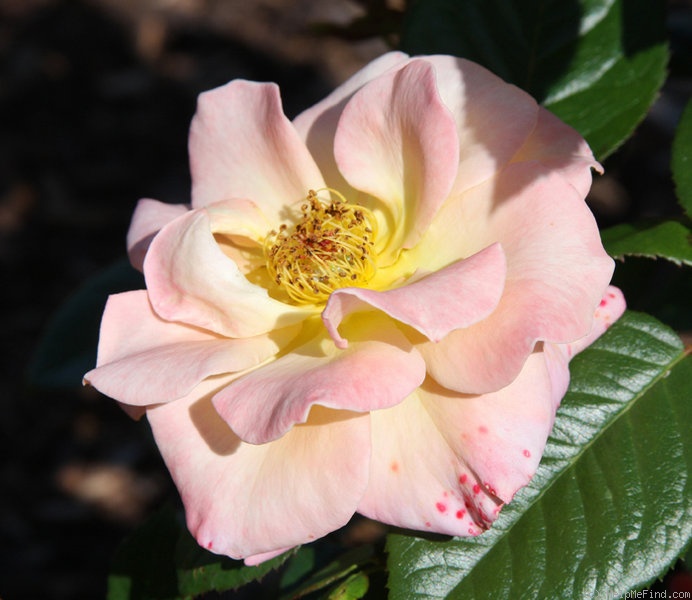|
|
'Peacekeeper' rose Description

Photo courtesy of Alberta Bell's Rose Garden
ARS:
Pink blend Floribunda. Registration name: HARbellaExhibition name: Peacekeeper
Bloom:
Orange. Apicot orange. Mild, spice fragrance. 30 petals. Average diameter 3.5". Medium-large, full (26-40 petals), cluster-flowered, in large clusters bloom form. Blooms in flushes throughout the season.
Habit:
Medium, bushy. Medium, glossy, light green foliage.
Height: 31" (80cm). Width: 2' (60cm).
Growing:
USDA zone 6b and warmer. Can be used for beds and borders, cut flower or garden. Protect tender new spring growth from hard freezes that may cause canker, die-back and death of the plant. . Remove spent blooms to encourage re-bloom. Spring Pruning: Remove old canes and dead or diseased wood and cut back canes that cross. In warmer climates, cut back the remaining canes by about one-third. In colder areas, you'll probably find you'll have to prune a little more than that. Remove old canes and dead or diseased wood..
Patents:
Australia - Application No: 1997/098 on 1997 VIEW PBR PATENT European Union - Patent No: 1525 on 16 Dec 1996 Application No: 19950507 on 3 Aug 1995 Holder: Harkness New Roses Ltd. Denomination approved: HARBELLA.
Expiry of protection on 31/12/2021.
Notes:
Harkness Roses describe the color of the blooms as orange with shades to yellow. (In the photograph of 'Peacekeeper' in their catalog, the outer edges of the petals appear to be pink.)
In The People's Almanac Presents The Twentieth Century, David Wallechinsky writes (page 48), The United Nations -- established by [President Franklin Delano] Roosevelt over the doubts of political opponents and other world leaders -- is a permanent legacy of his wartime leadership, and of his firm belief that the United States could ill afford another period of isolationism in which it would turn its back on the world's problems. For Roosevelt the United Nations was, among other things, a way of ensuring for the United States a leading role in the postwar world...
The name "United Nations" was devised by United States President Franklin D. Roosevelt and was first used in the "Declaration by United Nations" of 1 January 1942, during the Second World War, when representatives of 26 nations pledged their Governments to continue fighting together against the Axis Powers. The United Nations Charter was drawn up by the representatives of 50 countries at the United Nations Conference on International Organization, which met at San Francisco from 25 April to 26 June 1945. Those delegates deliberated on the basis of proposals worked out by the representatives of China, the Soviet Union, the United Kingdom and the United States at Dumbarton Oaks in August-October 1944. The Charter was signed on 26 June 1945 by the representatives of the 50 countries. Poland, which was not represented at the Conference, signed it later and became one of the original 51 Member States. The United Nations officially came into existence on 24 October 1945, when the Charter was ratified. United Nations Day is celebrated on 24 October.
|